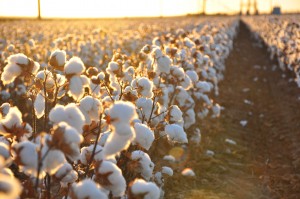Vardeman, Kimberly. Cotton Harvest. Digital image. Flickr, 15 Oct. 2011. Web. 19 Nov. 2015.
H&M, a widely known distributor of clothing, is one of the leading brands that uses organic cotton. The company is a member of BCI (Better Cotton Initiative), who works towards making sustainable cotton growing techniques more popular. Although cotton is a valuable resource — and feels amazing to wear —, it is extremely expensive to grow and maintain. Would you believe it if I said that to grow the cotton in just one pair of jeans uses 8,500 L of water? Think of all the other uses for that water. You could make so many cups of coffee, take so many showers, wash so many dishes, and more. By 2020, H&M would like for all their cotton to be organic or recycled (Cotton).
As a company that seems so enthusiastic to, not only provide high quality clothes, but ensure that they remain sustainable, you would assume that there would be little corner cutting. Yet in 2010, H&M was accused of selling genetically modified cotton as organic cotton (Investigating… H&M). Now for a company that has a whole page on their website dedicated to the benefits of organic cotton and their role in sustainable living, you would think that this is one corner they wouldn’t dare to cut.
Where are the moral principals in this? Although passing off regular cotton as organic cotton doesn’t seem like such a big deal, it actually is. One, it takes away business from smaller/not as well known companies trying to promote organic cotton. Two, it’s a lie to the customers. I understand that organic cotton and sustainability provides a good image, but a company’s business ethics should always be present. In the end, H&M is just another company that wants the good publicity without actually earning it.
External Sources:
“Cotton.” Cotton. N.p., n.d. Web. 17 Sept. 2015.
“Investigating The Sustainability Claims Behind H&M.” EcoSalon. N.p., 25 Jan. 2012. Web. 17 Sept. 2015.
